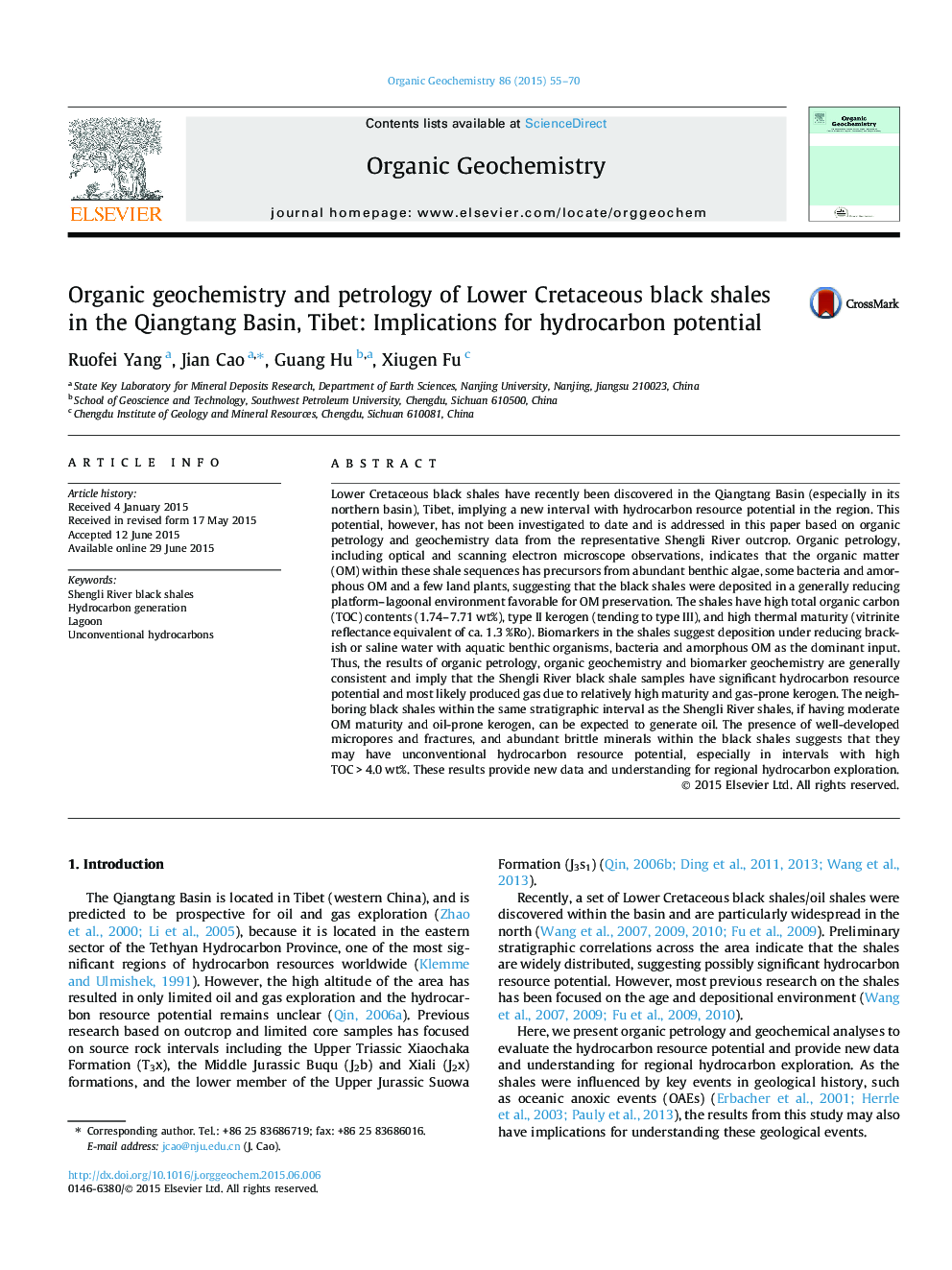| کد مقاله | کد نشریه | سال انتشار | مقاله انگلیسی | نسخه تمام متن |
|---|---|---|---|---|
| 5162224 | 1502276 | 2015 | 16 صفحه PDF | دانلود رایگان |
عنوان انگلیسی مقاله ISI
Organic geochemistry and petrology of Lower Cretaceous black shales in the Qiangtang Basin, Tibet: Implications for hydrocarbon potential
ترجمه فارسی عنوان
ژئوشیمی ارگانیک و پترولوژی شیلات سیاه کرتاسه پایین در حوضه کیانتانگ، تبت: پیامدهای پتانسیل هیدروکربن
دانلود مقاله + سفارش ترجمه
دانلود مقاله ISI انگلیسی
رایگان برای ایرانیان
کلمات کلیدی
رود شنگی شیلات سیاه، تولید هیدروکربن، تالاب هیدروکربنهای غیر متعارف،
موضوعات مرتبط
مهندسی و علوم پایه
شیمی
شیمی آلی
چکیده انگلیسی
Lower Cretaceous black shales have recently been discovered in the Qiangtang Basin (especially in its northern basin), Tibet, implying a new interval with hydrocarbon resource potential in the region. This potential, however, has not been investigated to date and is addressed in this paper based on organic petrology and geochemistry data from the representative Shengli River outcrop. Organic petrology, including optical and scanning electron microscope observations, indicates that the organic matter (OM) within these shale sequences has precursors from abundant benthic algae, some bacteria and amorphous OM and a few land plants, suggesting that the black shales were deposited in a generally reducing platform-lagoonal environment favorable for OM preservation. The shales have high total organic carbon (TOC) contents (1.74-7.71Â wt%), type II kerogen (tending to type III), and high thermal maturity (vitrinite reflectance equivalent of ca. 1.3 %Ro). Biomarkers in the shales suggest deposition under reducing brackish or saline water with aquatic benthic organisms, bacteria and amorphous OM as the dominant input. Thus, the results of organic petrology, organic geochemistry and biomarker geochemistry are generally consistent and imply that the Shengli River black shale samples have significant hydrocarbon resource potential and most likely produced gas due to relatively high maturity and gas-prone kerogen. The neighboring black shales within the same stratigraphic interval as the Shengli River shales, if having moderate OM maturity and oil-prone kerogen, can be expected to generate oil. The presence of well-developed micropores and fractures, and abundant brittle minerals within the black shales suggests that they may have unconventional hydrocarbon resource potential, especially in intervals with high TOCÂ >Â 4.0Â wt%. These results provide new data and understanding for regional hydrocarbon exploration.
ناشر
Database: Elsevier - ScienceDirect (ساینس دایرکت)
Journal: Organic Geochemistry - Volume 86, September 2015, Pages 55-70
Journal: Organic Geochemistry - Volume 86, September 2015, Pages 55-70
نویسندگان
Ruofei Yang, Jian Cao, Guang Hu, Xiugen Fu,
